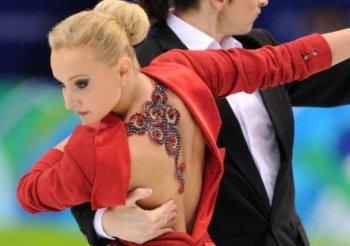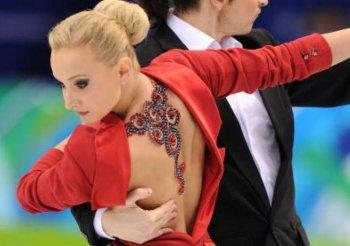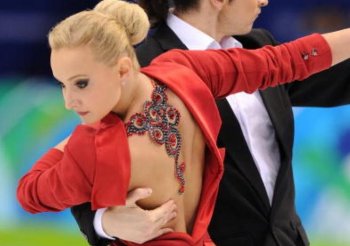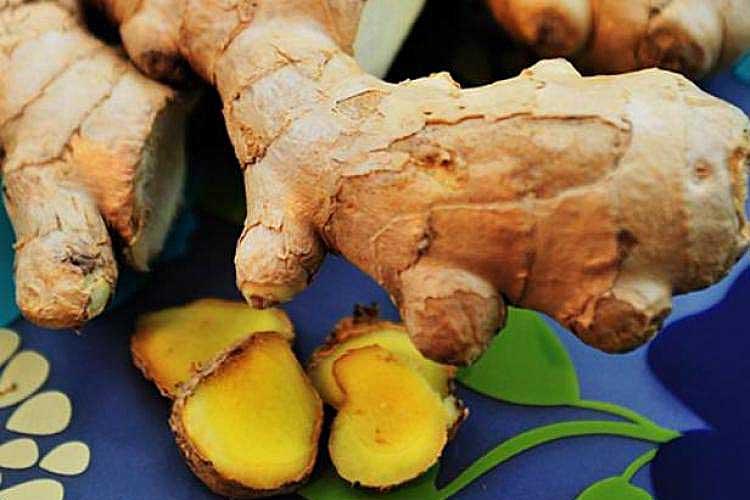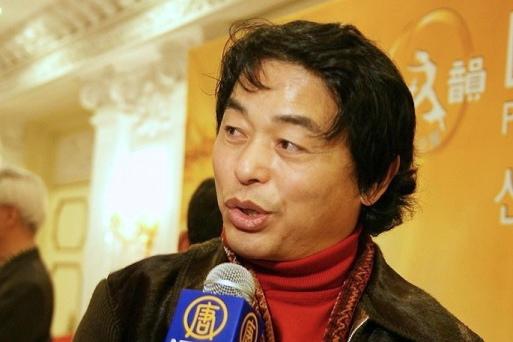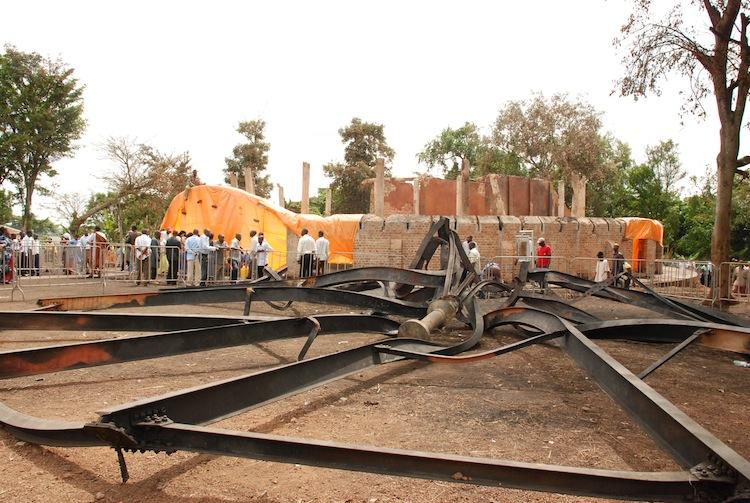VANCOUVER, Canada—At Vancouver’s Pacific Coliseum on Friday evening, 23 pairs of skaters danced their compulsory routines to Tango Romantica, each in their own style.
The score started to hit medal standard when the 17th pair American skaters Meryl Davis and Charlie White hit the ice. The duo, who scored fourth place in 2009 world championship, received 41.47, placing in third.
Russian 2009 world champions and Oksana Domnina and Maxim Shabalin topped the chart for the first day of ice dancing competition with 43.76, while Canada’s Tessa Virtue and Scott Moir surprised the crowd and the judges with their dramatic and energetic routine, gaining 42.74 points.
Virtue and Moir, Canada’s top medal contenders, skated last at 7:50 p.m. (10:50 p.m. EST) on home ice. Virtue came out with an elegant maroon dress that arguably looked the most ballroom-like among all competitors. After their performance, the crowd erupted into the loudest cheer of the evening.
Ice dance is similar to ballroom dance, albeit on the rink, in which the skaters strive to display rhythm, interpretation of music, and corresponding steps. Yet unlike pair figure skating, ice dance skaters do not include overhead lifts and jumps, and stay much closer to their partners.
The ice dance competition is composed of three rounds: one compulsory dance, an original dance (Feb. 21), and a free dance (Feb. 22), followed by a medal ceremony.
Georgian athletes made their debut at Vancouver’s Winter Games in the ice dancing competition, as their teammate luger Nodar Kumaritashvili died of an accident during a practice run on the Opening Ceremony day.
One of the three Georgian Olympians, Allison Reed, 15, is an ice dancer from Warren, N.J., but is competing for Georgia after finding her perfect Georgian partner Otar Japaridze last May. After a move that is not uncommon for a sport in which a perfectly compatible partner is hard to find, Reed now holds a Georgia passport in addition to that of the United States.
The score started to hit medal standard when the 17th pair American skaters Meryl Davis and Charlie White hit the ice. The duo, who scored fourth place in 2009 world championship, received 41.47, placing in third.
Russian 2009 world champions and Oksana Domnina and Maxim Shabalin topped the chart for the first day of ice dancing competition with 43.76, while Canada’s Tessa Virtue and Scott Moir surprised the crowd and the judges with their dramatic and energetic routine, gaining 42.74 points.
Virtue and Moir, Canada’s top medal contenders, skated last at 7:50 p.m. (10:50 p.m. EST) on home ice. Virtue came out with an elegant maroon dress that arguably looked the most ballroom-like among all competitors. After their performance, the crowd erupted into the loudest cheer of the evening.
Ice dance is similar to ballroom dance, albeit on the rink, in which the skaters strive to display rhythm, interpretation of music, and corresponding steps. Yet unlike pair figure skating, ice dance skaters do not include overhead lifts and jumps, and stay much closer to their partners.
The ice dance competition is composed of three rounds: one compulsory dance, an original dance (Feb. 21), and a free dance (Feb. 22), followed by a medal ceremony.
Georgian athletes made their debut at Vancouver’s Winter Games in the ice dancing competition, as their teammate luger Nodar Kumaritashvili died of an accident during a practice run on the Opening Ceremony day.
One of the three Georgian Olympians, Allison Reed, 15, is an ice dancer from Warren, N.J., but is competing for Georgia after finding her perfect Georgian partner Otar Japaridze last May. After a move that is not uncommon for a sport in which a perfectly compatible partner is hard to find, Reed now holds a Georgia passport in addition to that of the United States.
